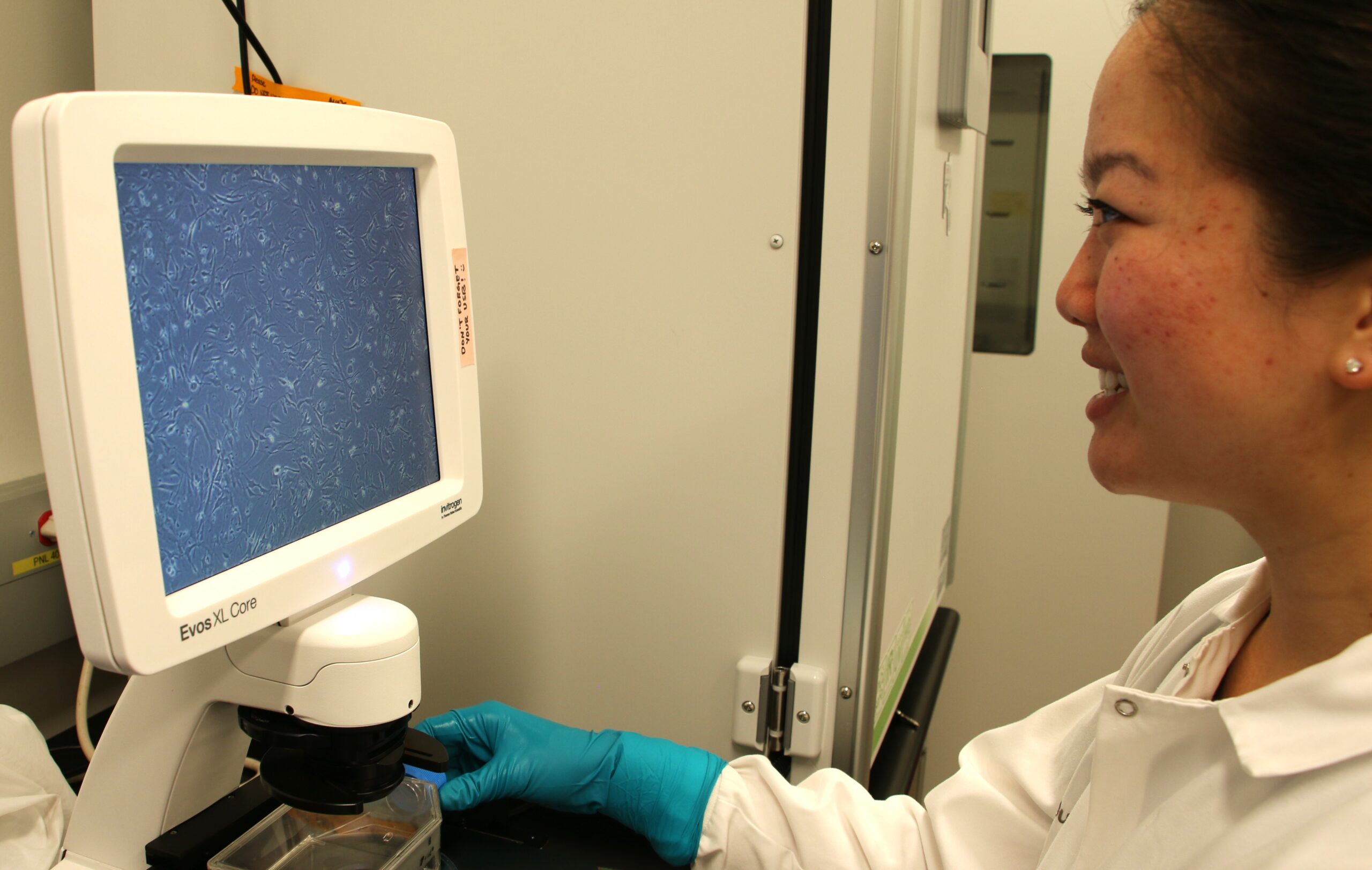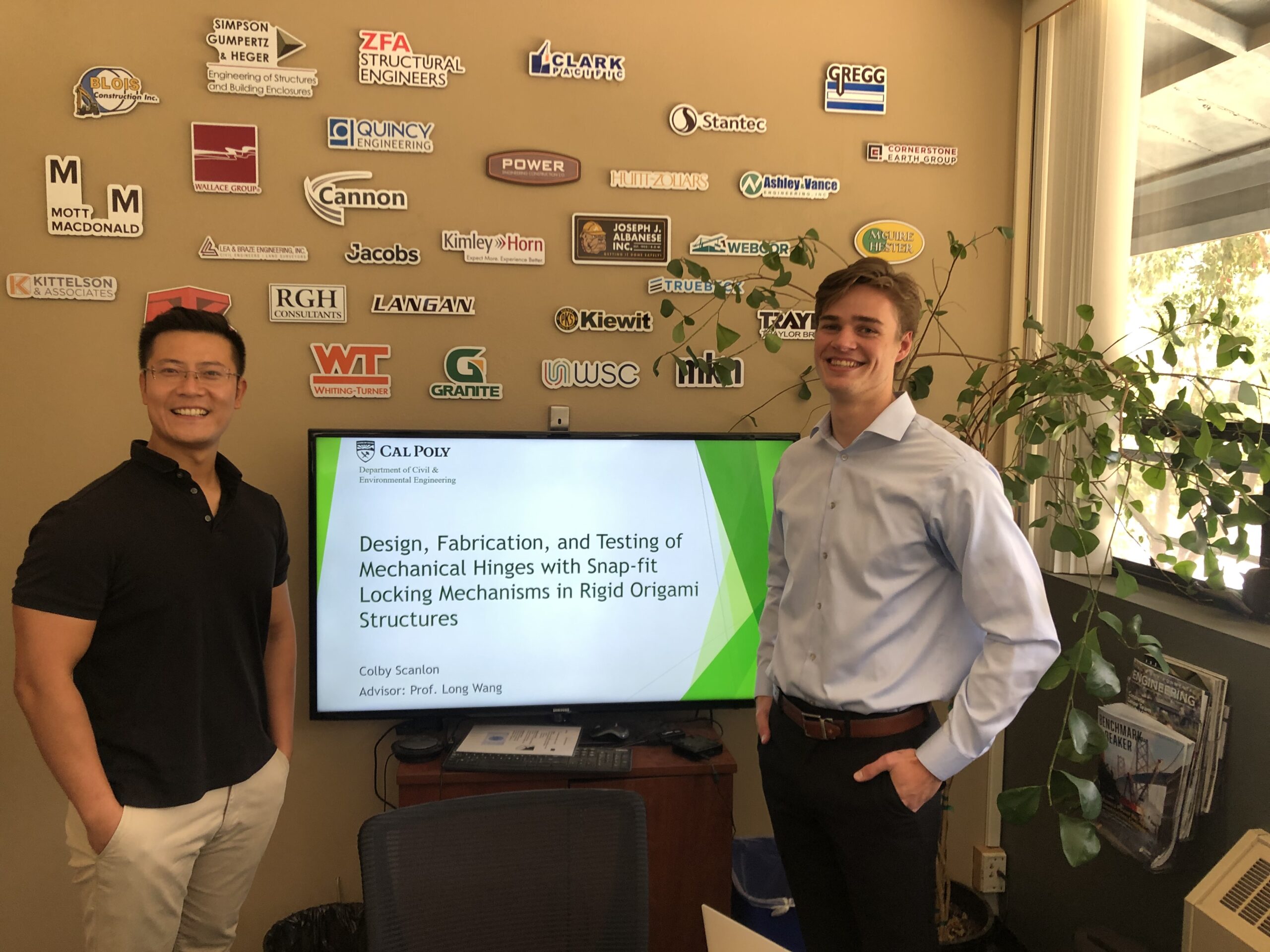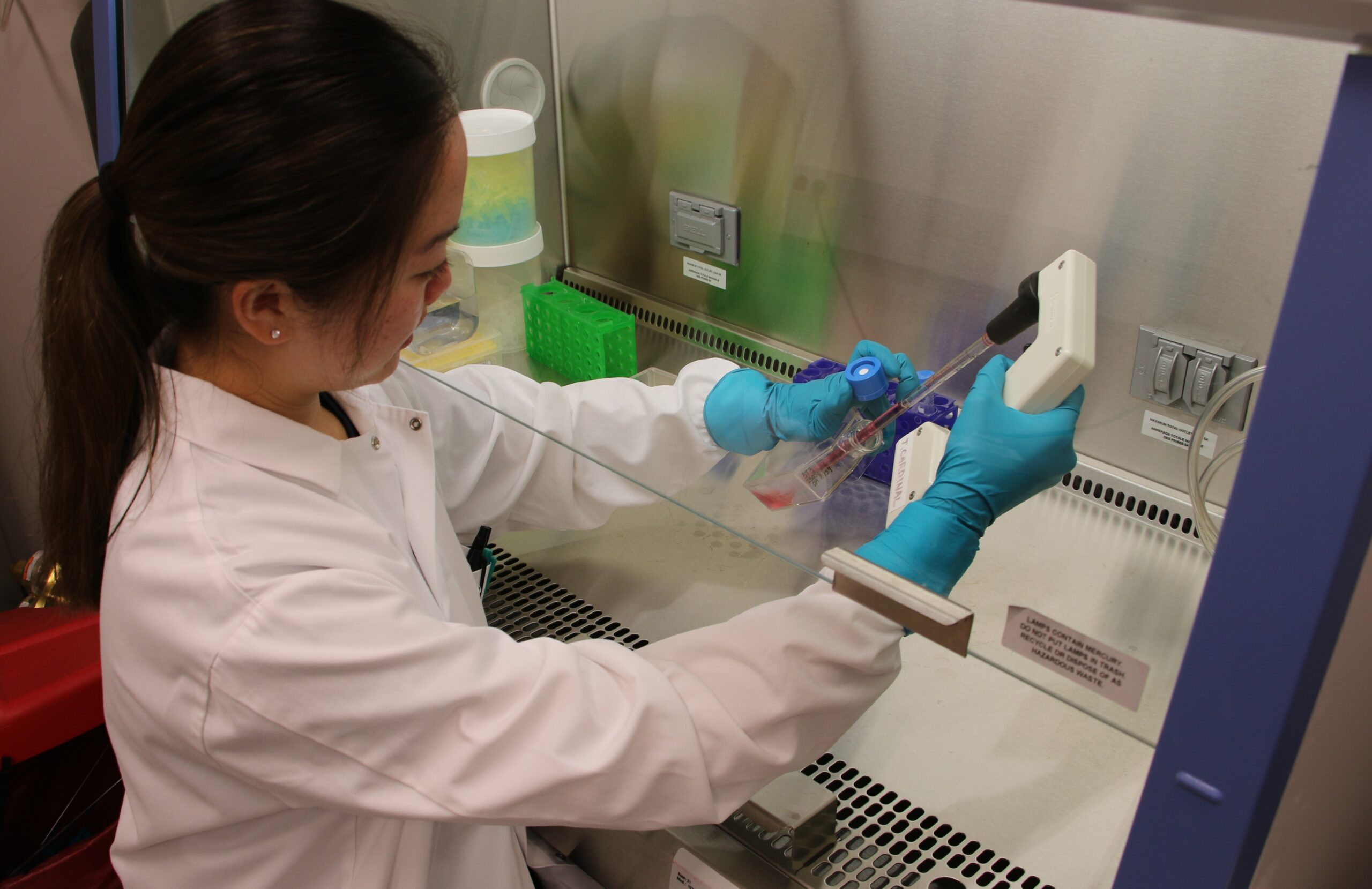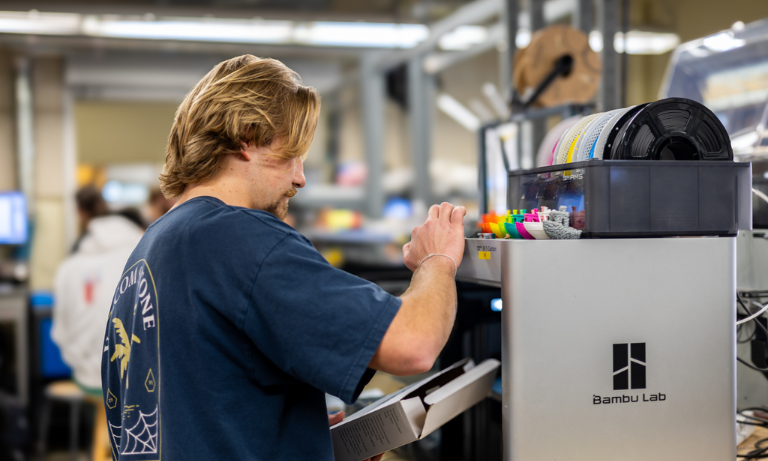Research at Cal Poly is designed to tackle pressing challenges, and two newly awarded patents reflect that mission: one explores a way to help patients at risk of limb loss, while the other introduces a hinge system that simplifies construction.
Developed by biomedical engineering Professor Trevor Cardinal and structural engineering Professor Long Wang, the patents address challenges in vastly different fields yet share a common goal of creating solutions that make a tangible impact.
With support from Cal Poly’s Office of Research, these breakthroughs showcase how engineering — whether in health care or infrastructure — drives innovation that improves lives.

A New Approach to Preventing Amputations
When arteries become clogged, the body can create natural bypasses to reroute blood flow around the blockage. Often, however, these small vessels don’t enlarge sufficiently to keep the downstream tissue alive, particularly in the legs. When that happens, it can result in amputation, which affects thousands of people each year, particularly those with diabetes or obesity.
Cardinal’s recently issued patent explores a new way to stimulate natural bypasses to enlarge, with the long-term goal of developing a therapy to help patients avoid amputation. His research began during graduate school at the University of Arizona, where he studied muscle stem cells, blood vessel growth and remodeling. After joining Cal Poly, he continued his work with students, eventually isolating and transplanting muscle stem cells into mice. Two of those students, Vahid Hamzeinejad and Ethan Tietze, are listed as co-inventors on the patent.
“In the lean mice, the cells did nothing, but in the obese mice, they enhanced the growth of natural bypasses,” Cardinal explained. “That outcome supported our hypothesis that muscle stem cells can overcome the proinflammatory metabolic environment that has limited the effectiveness of other cell therapies explored for preventing amputation when limb arteries become clogged.”
The findings are especially relevant given that many patients with vascular disease also have underlying metabolic conditions such as diabetes or high cholesterol, factors that have made past treatments less effective.
“We don’t know if these cells will work in humans yet,” he said. “But our results in mice suggest greater promise for muscle stem cells than other cell types that have already been tested, and found lacking, in clinical trials.”
He envisions eventually turning this patent into a therapy that spares patients from amputation.
Next steps include replacing mouse cells with human cells to see if the effect carries over, as well as securing additional funding to pinpoint how muscle stem cells communicate with other cells to promote the enlargement of the natural bypasses.

Engineering a Simple Hinge for Rapid Construction
In some scenarios — especially those requiring quick or temporary buildings — emergency shelters often consist of fragile tents offering minimal protection. But what if a sturdy, reusable structure could be set up just as easily? That’s the question Long Wang sought to answer when he and his student, Colby Scanlon, designed a new type of hinge that allows smaller structural panels to connect and fold into larger, rigid forms.
“I was looking at deployable structures in space,” Wang said, referencing NASA’s use of foldable habitats for extraterrestrial missions. Inspired by these concepts, he set out to adapt them for civil applications. The result is a lightweight, origami-inspired system that folds down for transport and unfolds into a functional building. Once its purpose is served, it can be folded back and stored for future use.
Wang’s patented hinge design was tested using 3D-printed models and wooden panels. It enables fast, low-cost construction — a feature that could be invaluable for emergency response and temporary structures but is also adaptable to a wide range of other building needs. “It’s not fancy,” Wang said, “but sometimes the simplest solutions are the best.”
Beyond potential humanitarian applications, Wang sees commercial promise in the technology. By making construction materials more transportable and versatile, the design could benefit industries ranging from military installations to temporary event structures.
Both patents were supported through Cal Poly’s Office of Research, which helps faculty navigate the patent process and bring their innovations to the broader world. To learn more about the university’s research initiatives, or if you are interested in technology transfer or patenting a new project, visit the Office of Research.
By Emily Slater


